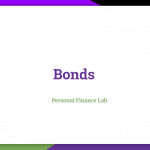When learning about managing your finances, many experts will recommend you begin with a budget. A budget is a tool that tracks income and expenses, and it allow you to set goals and make plans for the future. Developing a budget for a specific project, for a special event, or to help you with your monthly spending are all examples of using a budget to help you manage your financial situation.
Your Personal Budget
When you mention the word “budget” to others, you may get a negative response. That’s because people often associate budgeting with restrictions. They feel that if they go on a budget, it’s like going on a diet. They won’t be able to spend money in the way that they’d like. But a budget is really a financial planning tool. Every person or household should have a personal budget, not just to help keep spending under control, but also to help achieve what’s important financially, whether that’s saving for college, buying a second car, or going on that Hawaiian vacation. An effective budget will give you a clear picture of your expected income, a detailed look at where you spend your money, and it will help you set and achieve realistic savings goals.
There’s a reason that the word “personal” is used with budgeting. Although guidelines are often provided to help you determine how much to spend in different areas of your life, the choice is really yours. Your budget is designed for you based on your goals, so if you have enough income to spend more on your transportation needs, then go ahead and buy that Tesla. The purpose of having a budget is so that you have a plan for spending your money. This helps you avoid debt and achieve what you want to with your money.
In order to build your personal budget, you will need to gather your financial records, spend time to categorize and analyze your current spending, create a balance between earnings and expenses, consciously plan for expenses that you might be facing in the future, and put everything together while considering your long-term financial goals.
Gathering Your Financial Records
Your financial records include items like receipts from your last few months of spending, credit card and bank statements, your recent pay stubs, and your rent and cell phone contracts. When you are building your budget for the first time, gather as much information as you can on your past spending, if possible for the past few months.
Your goal when gathering your financial records is to have a completely clear picture of how you already spend your money. The biggest challenge of building a good budget is making sure it is realistic. Having exact records of how you spent your money is the best way to plan moving forward.
Categorizing and Analyzing Your Spending
Once you have your records in front of you, it’s time to categorize your spending. Your goal is to separate all of your spending into needs versus wants, and then into fixed versus variable expenses.
Needs and Wants
Needs are the things you must purchase in order to survive. They include necessities such as rent, utility bills, groceries, and medical expenses. They also include legal responsibilities such as paying taxes.
Wants are things that you chose to spend money on, but in theory they are items you don’t really need. Eating out, holiday gifts for friends and family, TV/streaming subscriptions, and new clothes might be in this category.
Once you have sorted your records into needs versus wants, you need to look closer and divide them into “fixed” and “variable” expenses.
Fixed and Variable
Fixed expenses are items whose cost stays the same from one month to the next. This means you can reliably plan for these expenditures. They include expenses such as rent, your cell phone bill, or a subscription fee for a video streaming service.
Variable expenses change from month to month, so it is hard to plan accurately for these expenses. They might include how much you spend on fashion, how many times you go out to eat, or how much you spend on gas for your car.
Some of your expenses may need to be split into smaller categories. For example, food is a need, so you could try to lump all of the money you’ve spent on “eating” into one category. But it’s more honest and will help you create a realistic plan if you separate your food items into categories such as groceries, coffee, and eating out.
Putting It All Together
Once you have finished sorting your records, list the categories of everything you’ve spent money on, placing the information in 4 different boxes – “Fixed Needs,” “Fixed Wants,” “Variable Needs,” and “Variable Wants.” Every penny you spent in the months you are analyzing should be included in these boxes.
Spending for the Month of August
Fixed Needs
- Rent
- Car Insurance
- Renter’s Insurance
Variable Needs
- Gas for car
- Electricity
- Groceries
Fixed Wants
- TV Package
- Spotify Account
- Gym Membership
Variable Wants
- Eating Out
- Birthday Gifts
- Manicure
Try to complete this spending analysis for the past six months if you can. What you’re looking for is enough data so that you can determine your “average spending” in each category. The more months you can look at, the better your future budget plan will be!
Balance Against What You Earn
Once you have taken an honest look on how you spend your money, you can start to balance these numbers against how much you earn.
If you earn all your money from one single full-time job, this part is easy – just look at your most recent pay stubs. But if you have a part-time job or some side hustles, estimating your income each month gets a bit harder.
Remember that the more months you can look at, the more accurate the numbers will be for your future budget. When reviewing your income numbers, take an average of what you have been earning. Do not assume you will always make as much as you did last month or in your “best” month. Be honest with yourself. It is better to have extra income at the end of the month than to always be expecting more income than you actually received.
Once you’ve determined this average income number, you can compare it with your normal spending. If the result shows that you are already earning more than you are spending, great! If your income is less than your spending, you will know you have some work to do. But regardless of what you see, there is still more planning to do.
Looking Ahead
Budgeting helps you make a definite plan to save money for those things you want and need in the future. There are several strategies to help you plan for unexpected and irregular expenses, but most come down to spending a few minutes for planning. One simple task will help you look ahead at expected expenses that often sneak up on you because you don’t pay them regularly. The task involves making a chart of irregular expense, determining when they need to be paid, and identifying how much the expenses will most likely be. (Use the previous year’s numbers to help you estimate this year’s costs.) Think about what holidays are coming up, and how much you plan on spending on gifts. If you visit the dentist twice a year, include that in your chart so you have the extra cash set aside BEFORE the visit.
Here’s an example of what this budget planning chart might look like.
| Expense | Jan | Feb | Mar | Apr | May | June | July | Aug | Sept | Oct | Nov | Dec |
|---|---|---|---|---|---|---|---|---|---|---|---|---|
| Health Physical | $50 | |||||||||||
| Auto Insurance | $600 | $600 | ||||||||||
| Life Insurance | $300 | $300 | $300 | $300 | ||||||||
| Birthday Gifts | $25 | $25 | $25 | $75 | $50 | |||||||
| Car Registration | $200 | $200 | ||||||||||
| Holiday Gifts | $1000 | |||||||||||
| Tuition | $2500 | $2500 | ||||||||||
| Dentist Visits | $20 | $40 |
Remember that being honest with yourself and including as much information as possible will make your budget a valuable document to help you with financial decisions. Pretending expenses are smaller than they really are or forgetting to include them in your plan is the fastest way to break your budget. But effectively “planning ahead” for your variable expenses is one of the cornerstones of success.
Setting Your Savings Goal
Now that you have an honest look at how much money flows in and how much flows out, you can set a realistic savings goal for every month.
Your savings goal will come from two concepts – Pay Yourself First and creating your Emergency Fund.
Pay Yourself First
Pay Yourself First means that you are making your savings goals your #1 priority. This strategy has consistently proven to be the most effective way to achieve your long-term goals. A pay-yourself-first strategy means that before you pay any bills or address any of your expenses, you set aside money for your savings. You no longer wait to see how much money is left at the end of the month to put into your savings account. Savings is absolutely “taken care of”.
Following the pay-yourself-first strategy means you would rather hit your savings goals and occasionally be late paying other expenses than wait until the end of the month and only save what is “left over.” Your savings goal sits at the very top of your “Fixed Needs” category every month, and money always goes into savings.
How much should you save? A good savings goal should be at least 10% of your expected income every month. If you have never been consistent with saving, you may need to immediately find ways to adjust your other expenses so that you can always hit your savings target.
What you do with the money you have saved is up to you. Investing can help your savings grow, but investing includes risks. Keeping your money in a savings account is safe, but it is not the fastest way to build wealth.
Your Emergency Fund
An Emergency Fund is savings you have set aside in case of true emergencies — large, unexpected expenses that may completely break your budget. If you are just starting to build an emergency fund, your first goal should be to save enough money to cover one month’s worth of expenses. Try to reach that goal by the end of a year. Your long-term goal is to save enough money to cover six months’ worth of expenses. Do this as quickly as possible but target to reach this goal within the next 5 years.
Your emergency fund is not part of your regular savings. It is money allocated for those unexpected expenses like a major car repair, traveling home for Grandma’s funeral, or physical therapy following your broken ankle. If you currently have no emergency fund or your emergency fund contains less money than needed to cover one month’s worth of expenses, cut back on spending in your “Variable Wants” category. The sacrifice now will help you relax later when you need that money and it is available for you. If you’ve had to use money from your emergency fund to cover unexpected expenses, you will need to cut back on spending in the following months in order to replenish your fund.
Unlike your regular savings, money in your emergency fund should not be invested. It should be set aside in a savings account, available for immediate withdraw in case of emergencies.
Basic Budgeting Strategies
We have a whole other lesson focusing just on budgeting strategies, but when you build your first budget keep these tips in mind:
- Be honest with yourself. If you are not honest with how much income you have or how you are spending money now, you will never be able to effectively control your spending in the future.
- If you need to make budget cuts, focus on your fixed expenses first. If you can shave money off your rent or downgrade recurring monthly subscriptions, it will have a much bigger long-term impact on your savings goals than if you skip going to the restaurant once or twice a month.
- Set up automatic transfers to move money from your checking account to your savings account either every time you make a deposit or at a fixed time each month. If you do not need to “remember” to set aside money for savings, it makes it much easier to hit your savings goals.
- Spend a few minutes each month doing a “budget status check.” Simply checking your bank account balance might not be enough. Taking a quick look at your bank account balance, credit card balance, and thinking about bills that still need to be paid that month will give you a good feel for how much money you can safely spend without breaking your budget.
- When you spend less money than you budgeted for, you have freed up money that can be saved or invested. This is a win-win for you.
- If you go over budget by spending more than you had planned for, it means you will potentially have less money the following month. You may need to make sacrifices and do with less. Thinking about opportunity cost and doing some comparison shopping will be more important as you now have less money than was anticipated.
[qsm quiz=82]
Challenge Questions
- What do you understand by the term budget?
- How might a budget help you with your financial goals?
- How can you relate opportunity cost to budgets?
- How would comparison shopping help with your budget?
- If you pay yourself first, are you more likely to make smarter money decisions with the money that is left and why?

 Teacher Introduction Webinars
Teacher Introduction Webinars 8 Simple Ways to Save Money
8 Simple Ways to Save Money Owning a Car
Owning a Car Bonds Presentation
Bonds Presentation